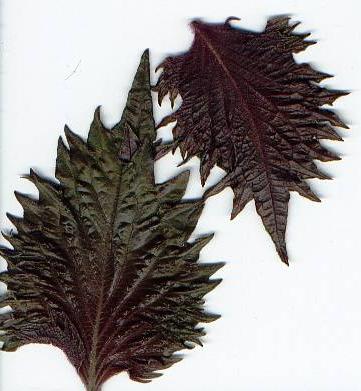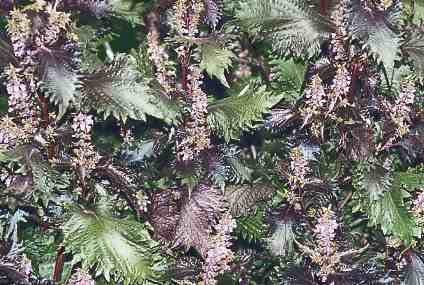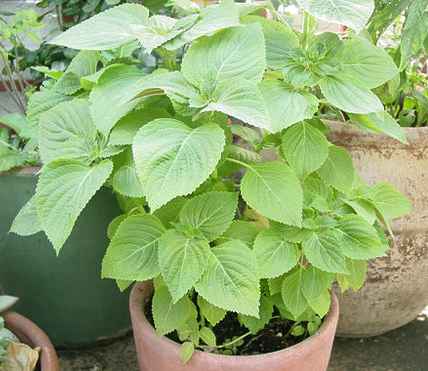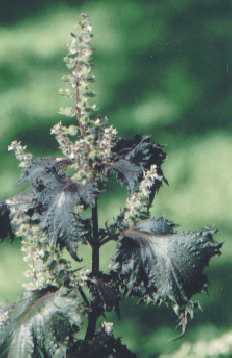
|
| Perilla in flower (red-leaved cultivar) |
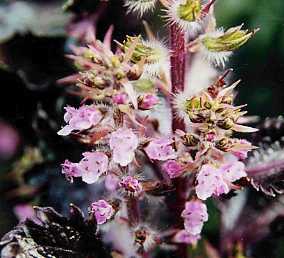
|
| Perilla flower, close-up |
Perilla is one of the few aromatic plants that have established themselves in Japanese cookery (shiso [紫蘇, しそ, シソ]). Other examples for Japanese herbs and spices, besides those named below, include Sichuan pepper, poppy and water pepper.
In Japan, perilla leaves are used to garnish sashimi,
the famous raw fish (see wasabi) and
tempura [天麩羅, 天ぷら, てんぷら, テンプラ], a
Portuguese-influenced Japanese recipe. Basically, tempura is
battered vegetables (potatoes, carrots) or sea food deep-fried in diluted sesame oil. The secret lies in the very special
batter, which is prepared with ice water and consumed immediately, resulting in
a unique, crispy, light, almost transparent coating. Perilla leaves can either be used
as a garnish, or be battered and deep-fried for themselves.

|
| Japanese red-leaved perilla |
In Japan, perilla cultivars with red or purple leaves are preferred to add both flavour and colour to pickles. An example is umeboshi [梅干, うめぼし], a special kind of salty pickle prepared from unripe fruits similar to plum or apricot (ume [梅, うめ], Prunus mume). The liquid in which umeboshi has been prepared gives colour to the ginger pickle beni shoga [紅生姜, べにしょうが], which is eaten with soups and noodle dishes. See also annatto on the topic of food colourants.
Of the Chinese cooking styles, only Hunan cuisine makes much use of perilla. It is mainly used for fish dishes, for which Hunan is famous. The leaves are not eaten raw as a garnish, but are rather coarsely chopped and added in the last phase of the cooking, to let them boil or steep for just a few minutes.
In the West, perilla has not yet become very popular. There is some
potential of using the leaves for their subtle flavour, but red-leaved
perilla is probably more interesting for its colouring capability. With red
perilla leaves, one can achieve colours ranging from a pale pink to an
intensive red wine hue.
